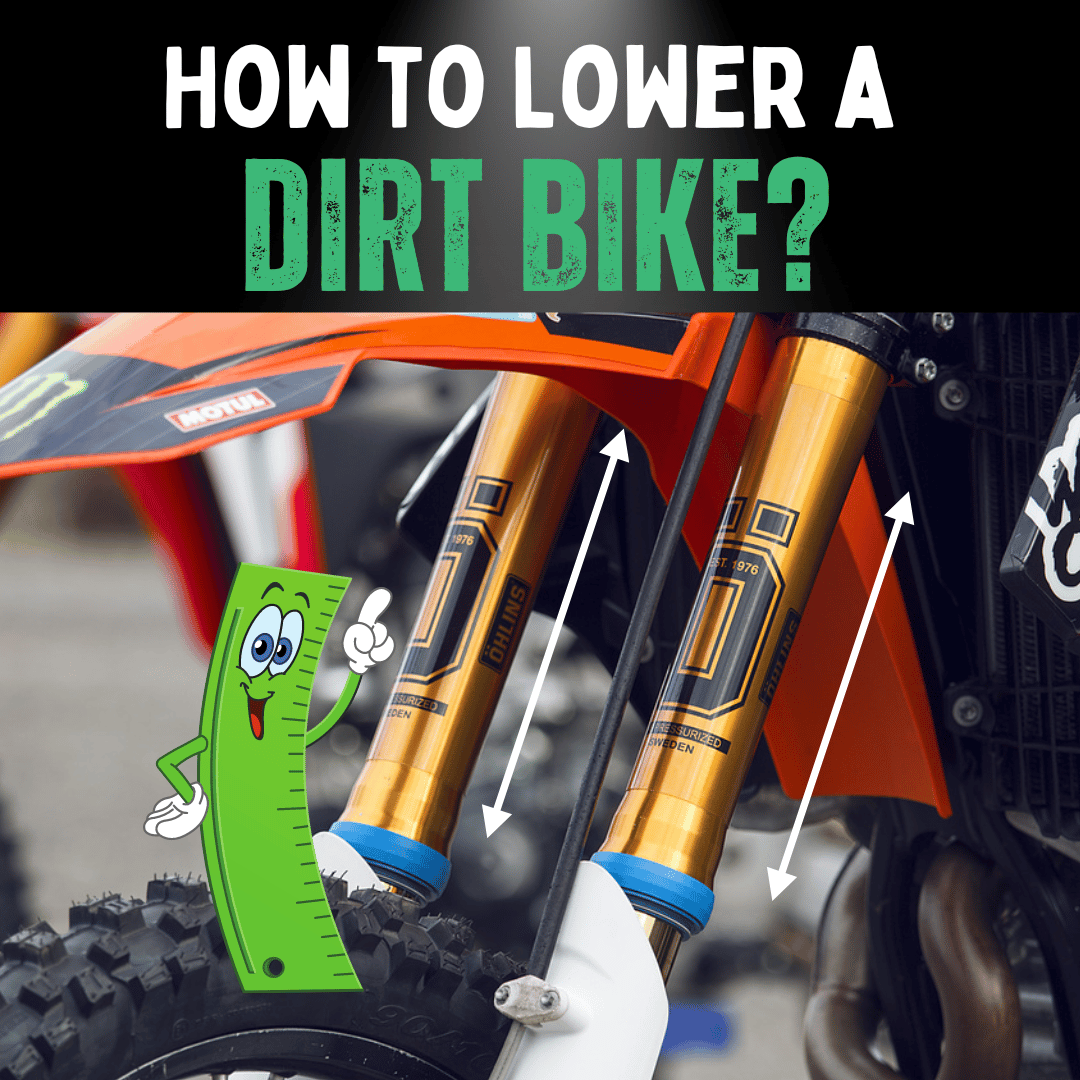Published: August 15, 2023
Updated: March 24, 2025
Riding a dirt bike is pure freedom—but only if it fits right.

Too tall a bike can spoil the fun. This 2025 guide shows you how to lower your dirt bike for better control and comfort.
Not sure about size? Check our What Size Dirt Bike Do You Need? guide. Parents, see our Junior Dirt Bike FAQs.
Quick Tip: Lowering a dirt bike starts with the front forks—lift the bike, loosen the pinch bolts, slide the forks up, and tighten securely.
5 Ways to Lower Your Dirt Bike
1. Adjust the Rear Shock
What It Does
The rear shock sets your bike’s height—like adjusting a chair for comfort.
How to Do It
- Lift the bike with a stand.
- Find the preload rings on the shock.
- Turn counter-clockwise with a spanner wrench to lower.
- Check sag and tweak as needed.
Tip: Small changes, test rides—get it just right. See our Motocross Suspension Guide.
2. Lower the Front Forks
Why It Works
Forks tilt and drop the front end—like a slide’s angle affecting speed.
Steps
- Loosen triple clamp bolts (upper and lower).
- Slide forks up carefully.
- Tighten bolts to spec torque.
Note: Test ride—it tweaks handling. Related: Dirt Bike Grips Guide.
3. Install a Lowering Link
What’s That?
It’s like new laces for your bike—changes the rear stance.
How to Install
- Lift the rear off the ground.
- Swap the stock link for a lowering link.
- Reassemble and adjust other parts.
4. Shave the Seat Foam
Quick Fix
Like a haircut—trim foam for a lower perch.
Steps
- Remove the seat.
- Cut foam to desired height.
- Reattach the cover.
Caveat: Comfort might dip a bit.
5. Use a Smaller Tyre
How It Helps
Smaller tyres drop height—like flats vs. heels.
Considerations
Warning: Affects performance—get expert advice. See Fix a Flat Tyre.
Pros and Cons
Pros
- Better reach and stability.
- More comfort and control.
Cons
- Less ground clearance.
- Altered handling—test carefully.
Common Mistakes to Avoid
- Over-tightening: Use a torque wrench.
- Suspension Mix-up: Balance front and rear.
- Too Low: Keep some clearance.
When to Call a Pro
DIY’s great, but pros help with complex tweaks, warranties, or racing setups. Safety first!
Long-term Maintenance Tips After Lowering Your Dirt Bike
- Inspect Regularly: Check bolts, suspension, and chain alignment after every few rides.
- Lubricate Often: Grease pivot points and chain to prevent wear—every 20 hours or after muddy rides.
- Monitor Tyres: Watch for uneven wear; adjust pressure before each ride.
- Pro Check-ups: Get a mechanic to inspect every 6 months or 100 hours.
- Watch for Issues: Note handling changes, noises, or bottoming out—fix promptly.
Keep your lowered bike in top shape for safe, fun rides!
Conclusion
Lowering your dirt bike tailors it to you—like a custom suit. Start with forks or shocks, test, and ride confidently in 2025!
FAQs
Why lower a kid’s dirt bike?
For better handling and comfort—especially for agile steering.
Special tools needed?
Basic wrenches work, but shocks or links may need a spanner or stand.
Resale value hit?
Maybe—reversible mods done well have less impact.
Combine methods?
Yes, but balance is key—don’t overdo it.
Ready to Ride? 🚀
Loved “How to Lower a Dirt Bike?” Craving more bike tips?
Hit RiiRoo.com or chat live with us for ride-on fun!








Share:
Why Are Dirt Bikes So Expensive? 2025 Cost Guide
How to Kick Start a Dirt Bike (8 EASY STEPS)